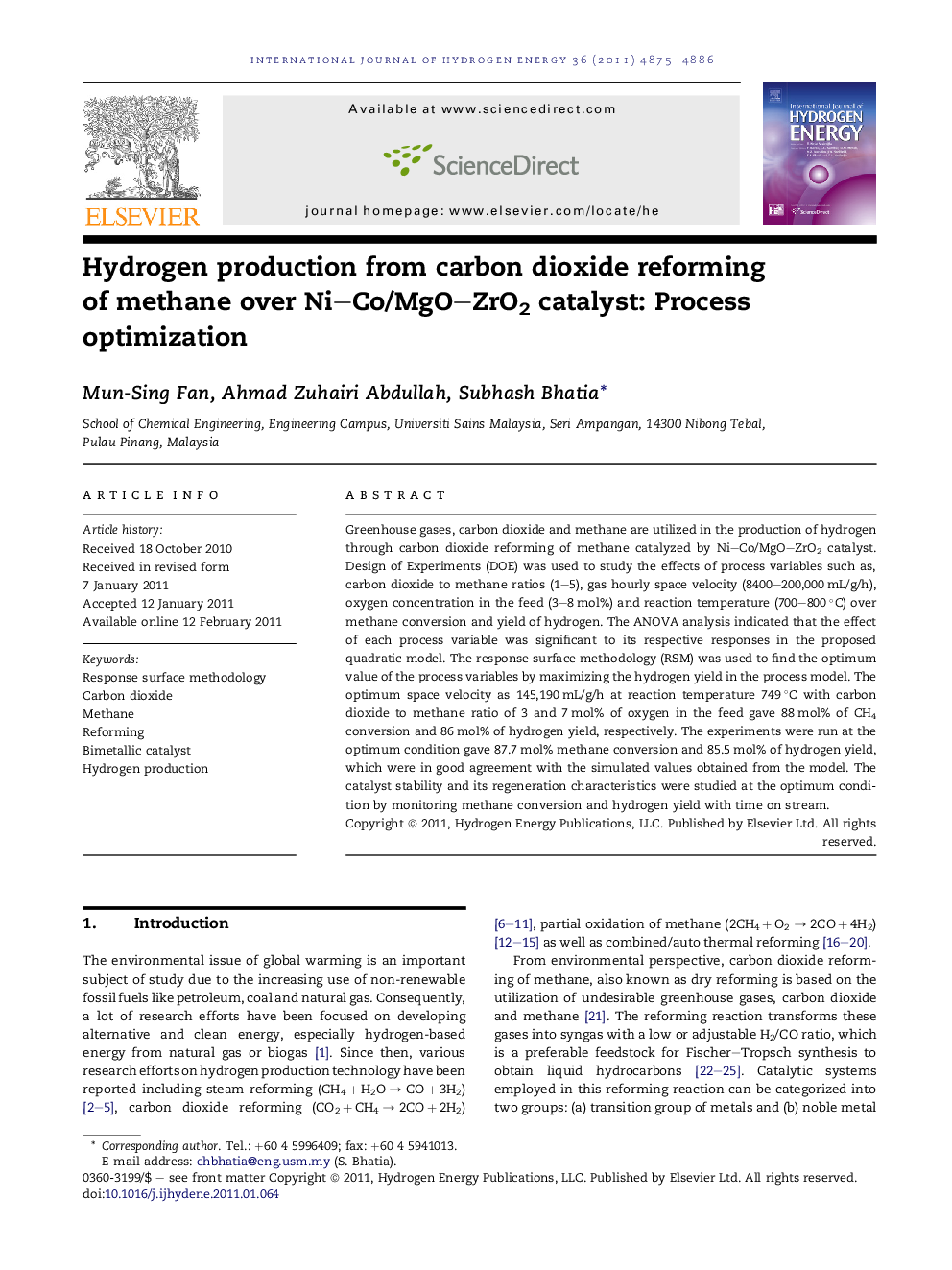| Article ID | Journal | Published Year | Pages | File Type |
|---|---|---|---|---|
| 1279795 | International Journal of Hydrogen Energy | 2011 | 12 Pages |
Greenhouse gases, carbon dioxide and methane are utilized in the production of hydrogen through carbon dioxide reforming of methane catalyzed by Ni–Co/MgO–ZrO2 catalyst. Design of Experiments (DOE) was used to study the effects of process variables such as, carbon dioxide to methane ratios (1–5), gas hourly space velocity (8400–200,000 mL/g/h), oxygen concentration in the feed (3–8 mol%) and reaction temperature (700–800 °C) over methane conversion and yield of hydrogen. The ANOVA analysis indicated that the effect of each process variable was significant to its respective responses in the proposed quadratic model. The response surface methodology (RSM) was used to find the optimum value of the process variables by maximizing the hydrogen yield in the process model. The optimum space velocity as 145,190 mL/g/h at reaction temperature 749 °C with carbon dioxide to methane ratio of 3 and 7 mol% of oxygen in the feed gave 88 mol% of CH4 conversion and 86 mol% of hydrogen yield, respectively. The experiments were run at the optimum condition gave 87.7 mol% methane conversion and 85.5 mol% of hydrogen yield, which were in good agreement with the simulated values obtained from the model. The catalyst stability and its regeneration characteristics were studied at the optimum condition by monitoring methane conversion and hydrogen yield with time on stream.
